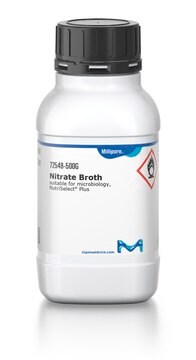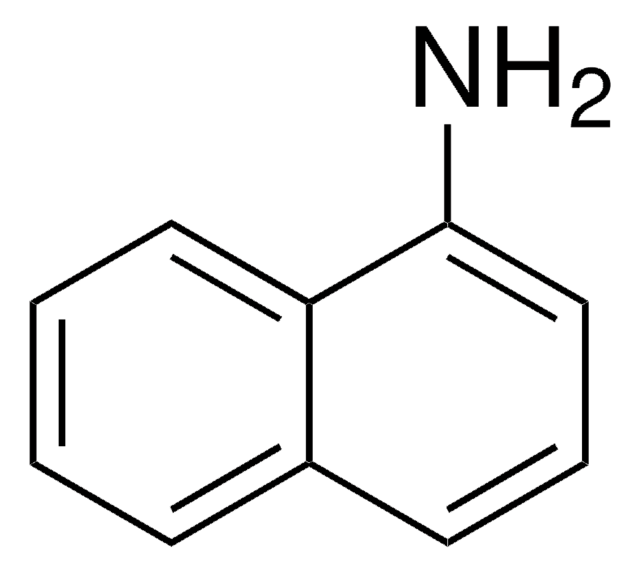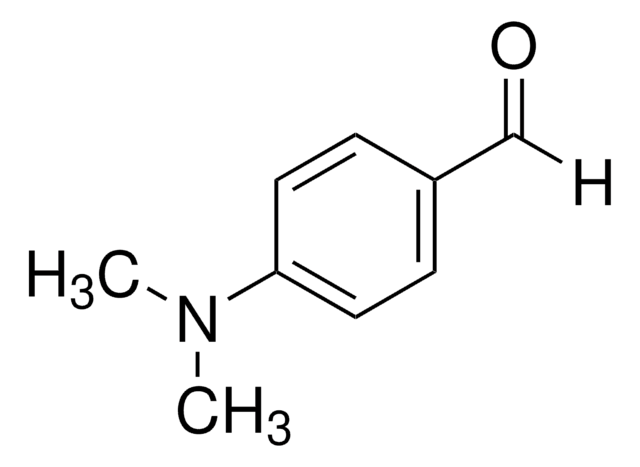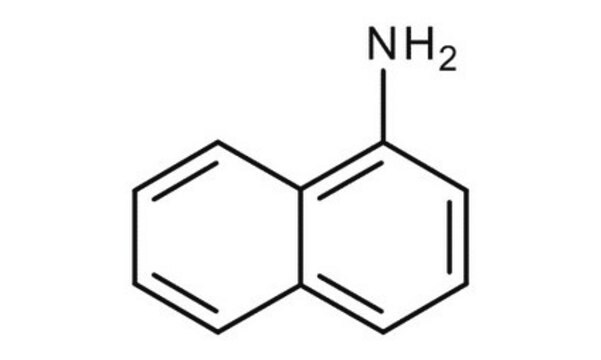38497
Nitrate Reagent A
suitable for microbiology
Sinónimos:
1-Naphthylamine solution
About This Item
Productos recomendados
Línea del producto
BioChemika
Nivel de calidad
caducidad
limited shelf life, expiry date on the label
composición
acetic acid 5 N, 1000 mL
α-naphthylamine, 5 g
técnicas
microbe id | metabolite detection: suitable
aplicaciones
agriculture
clinical testing
environmental
food and beverages
pharmaceutical
microbiology
idoneidad
Enterobacter spp.
Neisseria spp.
anaerobic bacteria
bacteria
InChI
1S/C10H9N/c11-10-7-3-5-8-4-1-2-6-9(8)10/h1-7H,11H2
Clave InChI
RUFPHBVGCFYCNW-UHFFFAOYSA-N
Descripción general
Palabra de señalización
Danger
Frases de peligro
Consejos de prudencia
Clasificaciones de peligro
Eye Dam. 1 - Skin Corr. 1B
Código de clase de almacenamiento
8A - Combustible corrosive hazardous materials
Clase de riesgo para el agua (WGK)
WGK 1
Punto de inflamabilidad (°F)
Not applicable
Punto de inflamabilidad (°C)
Not applicable
Equipo de protección personal
Faceshields, Gloves, Goggles, type ABEK (EN14387) respirator filter
Elija entre una de las versiones más recientes:
¿Ya tiene este producto?
Encuentre la documentación para los productos que ha comprado recientemente en la Biblioteca de documentos.
Los clientes también vieron
Artículos
Vibrio Detection
On the Trail of Campylobacter
For microbiologists the most fundamental stain was developed in 1884 by the Danish bacteriologist Hans Christian Gram.
There are many other methods of detection to indicate the presence of E. coli. Review common tests and biochemical reactions for this contaminant.
Protocolos
US EPA Method 8270 (Appendix IX): GC Analysis of Semivolatiles on Equity®-5 (30 m x 0.25 mm I.D., 0.50 μm)
Nuestro equipo de científicos tiene experiencia en todas las áreas de investigación: Ciencias de la vida, Ciencia de los materiales, Síntesis química, Cromatografía, Analítica y muchas otras.
Póngase en contacto con el Servicio técnico












